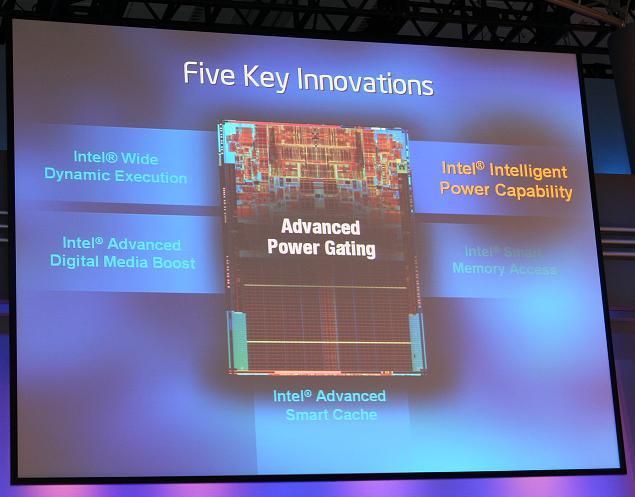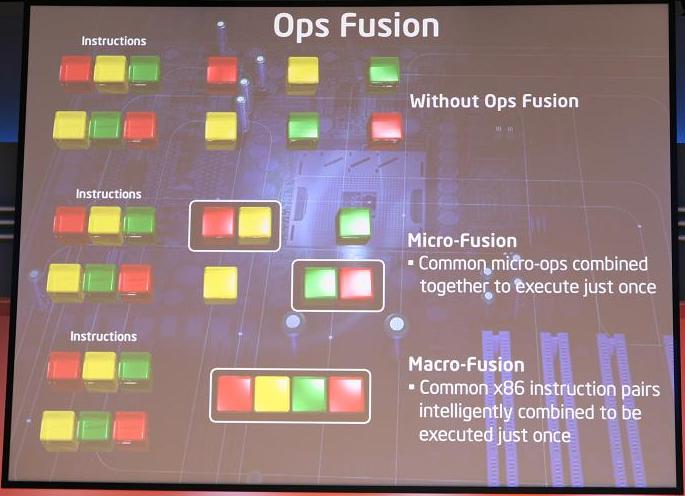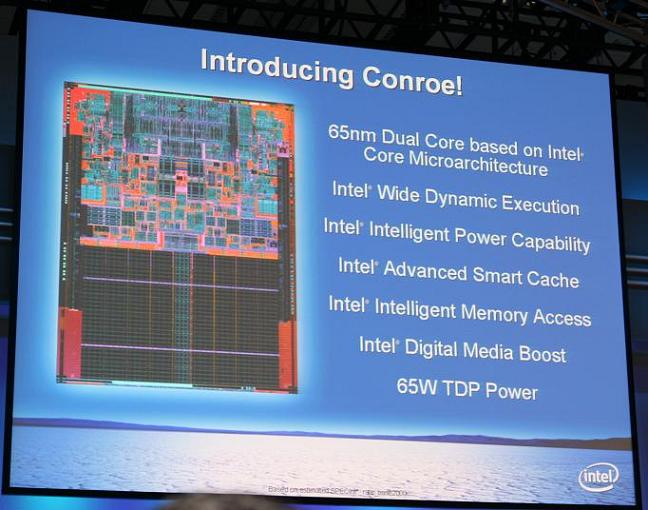Intel have announced their next-generation micro-architecture - Core. This was designed by the same team in Israel who worked on Banias, which was found in the Pentium-M until Dothan came along. Merom takes in to account the features and capabilities that are expected of a modern CPU, and includes the power and performance per watt of the Pentium-M series of CPUs.
This new architecture is going to be used top to bottom in all Intel CPUs, desktops, mobile systems and servers.
Intel's new architecture will be manufactured using a 65nm process. Intel already has four labs online ready for this and they plan to bring a significant number more online in the next six months. Intel believe they are over a year ahead of AMD in the manufacturing process and have leaped over AMD in the performance front, too, boasting 40 per cent better performance than Pentium D 950 while using 40 per cent less power.
So, the big question is HOW does this new architecture work? Well there are a number of major changes.
- Improved Instruction Pipeline, which is now four-issue wide, and gives four executions per clock, this means the CPU spends less time (thus less energy) on instructions, yielding more performance.
- Micro Fusion – this allows multiple instructions to be combined then passed through the pipeline
- Macro Fusion – this allows high-level (Intel instructions) to be combined and performed in the same cycle (compare and jump can be done at the same time)
- Intel Advance Digital Media Boost (128-bit SSE)
- Shared L2 Cache. This is 4MB on Conroe, with this being shared it not only means that each core can access data more efficiently, but it also allows less memory access (due to more being able to be stored locally) which gives a power usage improvement.
- Intel Smart Memory Access – This is a series of pre-fetch algorithms that have been improved to make them more efficient. Intel are doing funky things with Loads and Stores, bringing better order to the way that memory is accessed. Smart Memory also stops any conflict when they are both accessing the same part of memory. It will automatically detect this and stop it happening.
- Enhanced Power Gating - This will allow the CPU to shut down certain parts of the logic which are not used at the time, and is done extensively throughout the core architecture and allows significant power saving.
Fusion Explained:
We will see CORE come to the desktop in the form of Conroe, and Merom for notebooks.
Conroe on the desktop gives 40 per cent performance improvement and uses 40 per cent less power compared to Pentium D 950
UPDATES
HEXUS.reviews - WORLD EXCLUSIVE! Intel's Conroe spanks AMD FX-62's botty - for real (May 23, 2006)
July 14, 2006 (Launch day for Intel Core 2 Duo)
HEXUS.reviews - Intel Conroe Core 2 Duo/Extreme Processors
HEXUS.reviews - World exclusive! Intel Conroe-powered MESH Elite Extreme SLI system
















